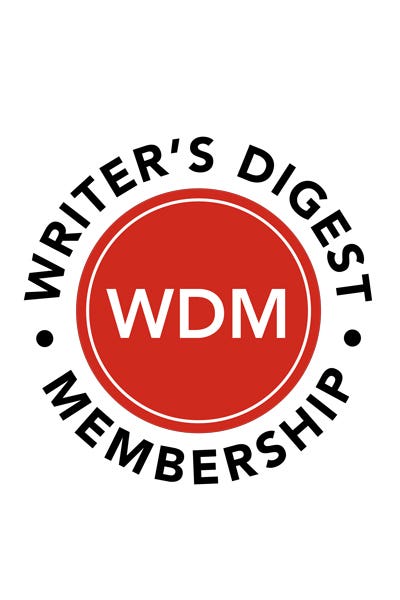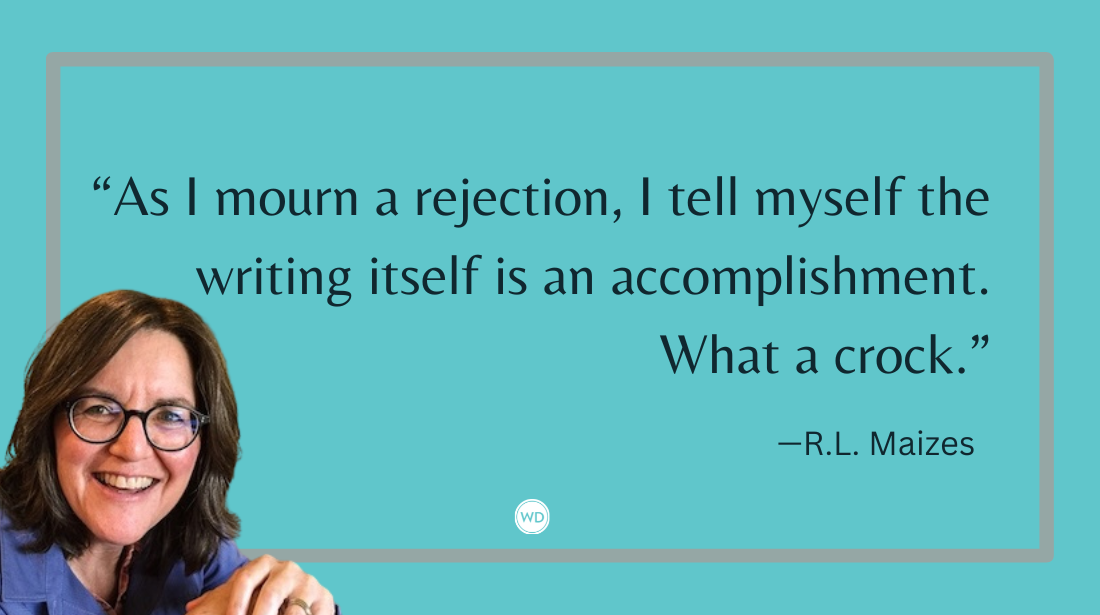Organizing Your Writing Side Hustle
Maintain your productivity and passion with these 7 tips from Paula Rizzo for organizing your writing side hustle.
Writing is your passion, but it’s also your side gig. Between your full-time job, family, and other responsibilities, how do you carve out time for your book and writing projects without feeling overwhelmed?
Whether you're squeezing in writing sessions before work, during lunch breaks, or late at night, it’s possible to stay productive while juggling it all! It just means getting a little creative and being intentional about your routines.
1. Harness your unique productivity style so writing fits into your real life.
Do you know your productivity style? One of the biggest hurdles people face when they’re trying to be more organized is figuring out what works for them.
Take note of how productive you feel in the morning, mid-day, and afternoon. For example, don’t become a morning person if you’re not one. Some people are night owls! Look for patterns—what time of day do you get into a good groove with writing?
Once you understand your productivity style, you can cater your work schedule around your needs. Maybe that means blocking off 20 minutes during lunch to write, or getting up a little earlier (or staying up later!). Being consistent with this routine is a must. The more you do it, the easier it’ll be to stick to it.
Remember, paying attention to the way you work best (as well as what’s not working for you) is essential to harnessing your productivity style. This is especially true when writing is your side hustle rather than your 9–5. You have to be extra creative about carving out time, and not just any time, but a time that actually works for you.
2. Use time-saving techniques to streamline your to-do list.
If your to-do list is getting long and unmanageable, it’s probably not serving you anymore. In fact, an extra-long to-do list can do the opposite and actually undermine your best efforts to get things done.
The first step is to recognize that your list-making strategy needs a reboot. I recently did an experiment with a new way of creating lists, and it made a huge difference for me. I was inspired by my friend and author Polly Campbell. She calls it the Bucket Method, and this is how it works:
Create Bucket: In the create bucket are your creative tasks. For example, if you’re writing a novel or short story, pick something that you can work on that day. Maybe that’s a chapter, an edit of one section, or brainstorming a new character.
Develop Bucket: The develop bucket goes for things you’re in the process of growing. It could be developing your business by coming up with ideas for new ways to get clients. Or maybe it means filming a video for social media or supporting other people in your field. Something where you’re developing your business or developing your craft through a class or writing group.
Deadline Bucket: The last bucket is the deadline bucket. These are the things that have to get done today, full stop. These are the actual deadline-oriented things. Maybe you have to write an article or you have to review an article or you have to put your newsletter out. Those deadlines are not flexible, and this bucket helps you get them done on time.
As an author, I can say definitively that the Bucket Method has helped me prioritize my creative tasks because I can see them right there. If your to-do list has been keeping you down, this reboot is worth a try!
3. Reduce stress and mental clutter, so you can write with a clear head.
Stress and mental clutter can invade your writing time and make it hard to focus on the task at hand. That’s why creating boundaries between your writing and your other work or home life are so key. I’d encourage you to look at your current workflow and determine where you might be able to build in some boundaries.
If you find that work and personal tasks are overlapping with your writing in ways you’re uncomfortable with, setting boundaries can be as simple as communicating with colleagues and clients about when you’re available and when you’re not.
There are lots of ways to reduce ambient stress, too. One that I like to do is called a Thimble List. It’s like a bucket list but for the small things! Thimble Lists are great for practicing gratitude. Is your morning coffee or tea the highlight of your day? Or walking your dog in the evening? Taking a long bath?
Brainstorm a few things in your routine that are already making you feel happy.
Then think about why those things make you happy. These are things you can add to your Thimble List, such as “notice the trees changing on my walk” and “practice gratitude for the smell of my coffee.” This small shift can help you slow down and reduce stress, which gives you a fresh start when you get to work on writing.
4. Capture Ideas in the Moment
There’s nothing worse than having an idea and then losing track of it. Having pen and paper by your side isn’t always possible so I have a few tricks to grab ideas when they come to you.
You can leave yourself a voicemail, voice memo, or even dictate an email to yourself if you’re on the go. Just make sure you know where to keep track of these items so they don’t disappear after you’ve grabbed them. I also have used WhisperMemos to record a voice memo that is transcribed instantly and sent to you via email. Sometimes when I’m sitting at my desk and I think of a concept I want to capture I will start a meeting with myself on Zoom and transcribe it and record using the Fathom app. This is great if you’re like me and need to sometimes talk through ideas before writing them out.
5. Create a portable, flexible writing space—even if you don’t have an office.
Having the perfect setting isn’t always possible, but you should stack the deck in your favor as much as you can. Consider the following questions to figure out what kind of work environment is best for you:
- How do you feel working in an open area with other people?
- How do you feel working in a quiet place by yourself?
- Where do you feel the most energized to get things done? (At home, at a café, outside, etc.)
- What kind of lighting makes you feel ready to work?
- What is the temperature in your ideal working location?
Once you have answers to these questions, you can begin to design a workspace that meets your individual needs. And that doesn’t mean having an office! You can create a productive workspace in a kitchen, dining room, library, or café—it all depends on how you work best.
Use the answers from the questions above to guide your choice of workspace and think about what tools you need. Maybe that’s a pair of noise-cancelling headphones, a lamp, or a cozy sweater. Think of these as the building blocks that set you up for a productive work time.
6. Bust distractions to make the most of the time you do have.
One of the biggest distractions is noise. Using noise-cancelling headphones can be a great tool. If silence doesn’t help you concentrate, music or white noise can be really helpful. However you do it, tuning out distracting sounds is a key aspect of productivity.
Another common distraction? Your phone. From social media to incoming texts, your phone seems bent on taking your attention away from what you should be doing. To counter this issue, only answer calls if it’s absolutely necessary. Unless it’s about a task you’re currently working on and need information about, don’t answer the phone. The list of ways to reach you is endless, so if it’s an emergency, you’ll know. Otherwise, protect your focus and ignore the phone—you can even stash it in another room when you really need to zero in on a task.
7. Get inspired by the best in the biz.
This isn’t about doing more; it’s about working smarter. So many well-known authors began writing as a side hustle. Learning from their routines can be really inspiring. For example, Toni Morrison worked a 9–5 job when she began writing, and she wrote whenever she could, especially mornings before work. Ernest Hemingway was another early bird. He had an usual productivity style—he only wrote standing up! And I love these fun facts about Gertrude Stein: She woke up at 10 a.m. and wrote outdoors with cows for half an hour each day.
This all goes to show that everyone has their own style for making writing work as a side hustle. And once you tap into those tools and strategies, you can integrate writing into your busy schedule without sacrificing your energy or creativity.
Paula Rizzo is an Emmy Award-winning television producer, bestselling author of Listful Thinking & Listful Living, media-training coach, speaker, LinkedIn Learning Instructor, host of the live-stream show “Inside Scoop,” and creator of the popular online training Media-Ready Author. Grab Paula’s free guide, 10 Media Questions Every Author Needs to Answer, to create buzz for your book.









